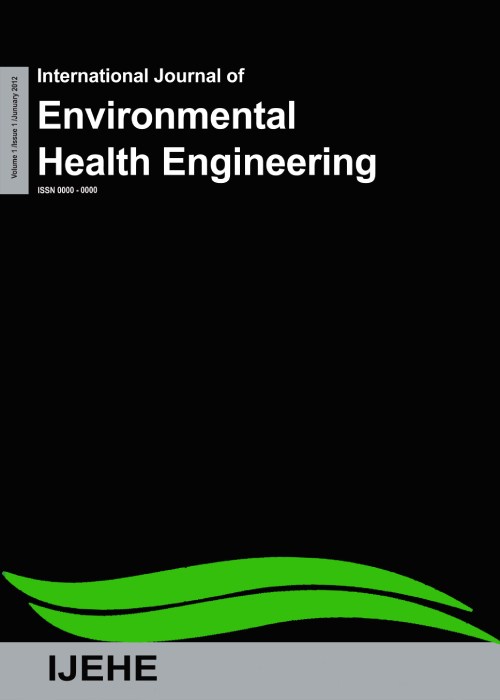فهرست مطالب
International Journal of Environmental Health Engineering
Volume:8 Issue: 2, Aug 2019
- تاریخ انتشار: 1398/05/10
- تعداد عناوین: 2
-
-
Page 1Aims
Attention to physical, health, and safety factors in educational environments is the most effective and fundamental factor for physical and mental growth of the students and their learning. Hence, one of the most important and influential school health issues is environmental health and safety. Accordingly, this study was conducted to study the environmental health and safety of Evaz district schools.
Materials and MethodsThis descriptive cross-sectional study was carried out in 2017 and the conditions of environmental health and safety of 16 schools (elementary, secondary, and high schools) were studied in Evaz County. For this purpose, a checklist with 48 questions was prepared. The checklist was prepared based on the Iranian environmental health of schools standards codes and completed by means of observing and interviewing the authorities and the obtained data were analyzed using the SPSS version 16.
ResultsThe conditions of the schools were in an unfavorable status in terms of the healthy storeroom, controlling the insects and rodents, installation electrical safety (insulating) mat under the electrical panels, and installation of handwashing guide. The results showed that there were no pool and fountain, laboratory and workshop, and balcony and terrace in some of those schools. The statistical analysis depicts the significant correlation between the school area and the places for fuel storage and teachers' rest (P = 0.03).
ConclusionBased on the results the schools of Evaz city were in a favorable status in terms of equipment safety and the building sanitary rules, while the status of individual health and building safety was lower than the standard level. So, such items should be considered for health promotion of such schools.
Keywords: Environmental Health, school safety, Students -
Page 2Aims
This study was carried out to understand the awareness, attitude, and practices about needle prick injuries and postexposure prophylaxis (PEP) against human immunodeficiency virus, hepatitis B (surface antigen), and hepatitis C virus among health-care workers (HCWs) of the tertiary care center.
Materials and MethodsThis was a descriptive hospital-based, cross-sectional study carried out over a period of 1½ year. After informed consent and ethical clearance from the institutional ethics committee, patients were interviewed; previous records about needle prick injuries and PEP were analyzed. HCWs from Queen Mary's Hospital and Trauma Center of King Georges Medical University, Lucknow, India, were evaluated for needle prick injuries and PEP. During the study period, 140 hospital staffs including 74 resident doctors, 40 nurses, and 26 fourth-class employees were interviewed. Data were obtained from predetermined questionnaire regarding knowledge, attitude, and practices about needle prick injury types, precautions, reporting to the nodal officer, and delay in PEP if accidentally needle pricked.
ResultsOut of 140 participants, 105 (75%) were aware about PEP and 93 (66.42%) HCWs had positive attitude toward PEP. A total of 34 (24.28%) patients were injured, including 10 doctors, 16 nurses, and 8 fourth-class employees. 100% doctors, 50% nurses, and 42.3% fourth-class employees had knowledge about PEP. Out of 13 deep penetrating needlestick injuries, 4 injuries occurred during injection administration, 4 of them during suturing, and 5 during recapping. After exposure, all 13 cases had received PEP and all were seronegative after 6 months of follow-up.
ConclusionNeedlestick injuries and sharp object injuries represent a major health problem to HCWs. Prevention should be based on immunization, education of HCWs, and proper training about biomedical waste managemen
Keywords: Accidental injuries, health‑care workers, Hepatitis B surface antigen, Hepatitis C virus, Human immunodeficiency virus, postexposure prophylaxis


